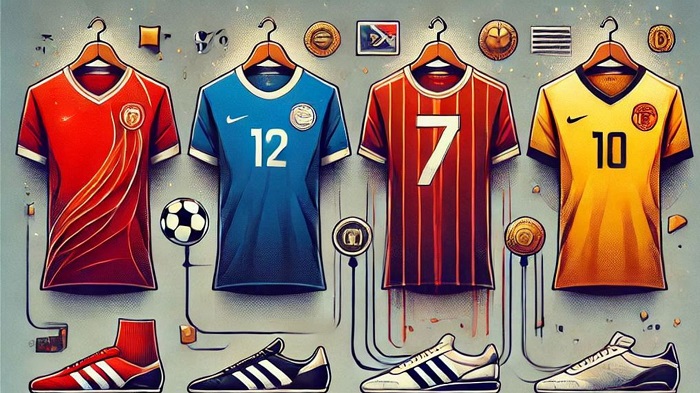Football shirts have come a long way from simple, functional uniforms. They’ve evolved into lightweight, high-tech garments that reflect changing trends in fashion and fan culture.
This article traces the journey of football shirts, from their utilitarian origins to their role as symbols of identity and lifestyle. Here’s how innovations in materials, sponsorships and design have transformed these once-basic kits into must-have items. For many fans, the release of a new kit has become a hotly-anticipated event.
The origins of football shirts
In the early days of football, players wore heavy, long-sleeved cotton shirts, paired with sturdy woollen shorts and thick socks, offering durability rather than comfort. These early uniforms didn’t have logos or personalisation, often consisting of plain colours or basic stripes to distinguish teams on the pitch.
Practicality dictated the design, as the materials needed to withstand rough play and harsh weather. There was little consideration for style or individuality. The lack of standardisation meant clubs had varying interpretations of what a kit should look like, leading to a patchwork of designs in the game’s formative years.
Technological innovations in fabric and fit
Modern football shirts have revolutionised performance through cutting-edge materials and ergonomic designs. Lightweight, moisture-wicking fabrics like polyester blends help players stay cool and dry by managing sweat and improving breathability. Advanced compression fits enhance blood circulation and muscle support, reducing fatigue during intense matches. Seamless construction and stretchable materials improve comfort and reduce chafing, allowing unrestricted movement on the pitch.
Beyond performance, modern designs incorporate ventilation zones and UV protection, adapting to diverse weather conditions. These innovations ensure that today’s football shirts are not just stylish but also engineered for peak athletic performance, merging science with sport.
Football shirts as fashion icons
Football shirts have become staples of everyday fashion and cultural expression. Their bold designs, vibrant colours and iconic branding have captured the attention of fans and fashion enthusiasts alike. Vintage kits and limited-edition releases are now prized collectibles, while collaborations with luxury brands and streetwear labels have elevated football shirts to high-fashion status.
Collecting football shirts
The passion for football shirts has evolved into a thriving collector’s market, with enthusiasts seeking rare designs and limited editions. What was once simply fan memorabilia has become a global phenomenon, fuelled by nostalgia and the artistry of retro designs.
Online platforms and vintage markets have made it easier to find iconic jerseys from past decades, while modern releases often become instant collectibles. For many, these shirts represent cultural milestones or team history, with fans seeking out shirts representing their favourite football players or eras. The rise of football shirt collecting reflects their growing status as both sporting artifacts and wearable works of art.
The Impact of Sponsorships and Branding
Sponsorships and branding have played a crucial role in the evolution of football shirts, transforming them from simple team uniforms into powerful marketing tools. Early football uniforms were mainly sponsor-free, but corporate logos appeared on jerseys as the sport grew increasingly commercialized, providing teams major financial support. Football jerseys now have famous companies practically everywhere, with significant sponsors establishing a team’s identity. Large, firm logos on these shirts show team pride and represent business agreements that impact design and price.
















Leave a Reply